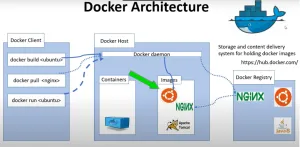
Efficient Laravel Development - Essential Tips and Tricks for Beginners
Are you new to Laravel and looking to level up your development skills? Whether you're building a simple website or a complex web application, mastering Laravel's features and best practices can significantly improve your efficiency and productivity. In this beginner-friendly guide, we'll explore essential tips and tricks to help you streamline your Laravel development process, step by step, with easy-to-understand examples.
Step 1: Set Up Your Laravel Environment
Before diving into development, ensure that you have a working Laravel environment set up on your machine. Follow the official Laravel documentation or use tools like Laravel Valet or Homestead to quickly set up your development environment.
Step 2: Leverage Blade Templating Engine
Laravel's Blade templating engine offers powerful features for building dynamic and reusable views. Familiarize yourself with Blade syntax and leverage its features like control structures, including directives, and layout inheritance to create clean and maintainable templates.
<!-- Example of Blade template -->
@extends('layouts.app')
@section('content')
<div class="container">
<h1>Welcome to our website!</h1>
<p>{{ $message }}</p>
</div>
@endsection
Step 3: Utilize Eloquent ORM for Database Interactions
Eloquent ORM simplifies database interactions in Laravel by providing an expressive and fluent interface for working with database tables. Learn how to define models, create relationships, and perform common database operations like querying and updating data.
// Example of Eloquent model definition
class User extends Model
{
protected $fillable = ['name', 'email', 'password'];
}
Step 4: Optimize Your Routes
Organize your application's routes efficiently to improve readability and maintainability. Utilize route groups, resource controllers, and route model binding to structure your routes logically and handle CRUD operations effectively.
// Example of route definition with route model binding
Route::get('/users/{user}', function (App\Models\User $user) {
return view('user.profile', ['user' => $user]);
});
Step 5: Implement Middleware for Authentication and Authorization
Secure your application by implementing middleware for authentication and authorization. Laravel provides built-in middleware like auth and can for handling user authentication and authorization checks. Utilize these middleware to protect routes and control access to resources.
// Example of protecting routes with auth middleware
Route::middleware('auth')->get('/dashboard', function () {
return view('dashboard');
});
Step 6: Test Your Code
Thoroughly test your Laravel application to ensure that it functions as expected. Write unit tests using Laravel's testing utilities like PHPUnit and Laravel Dusk to cover critical parts of your application and prevent regressions.
By following these essential tips and tricks, beginners can streamline their Laravel development process and build robust web applications with ease.






